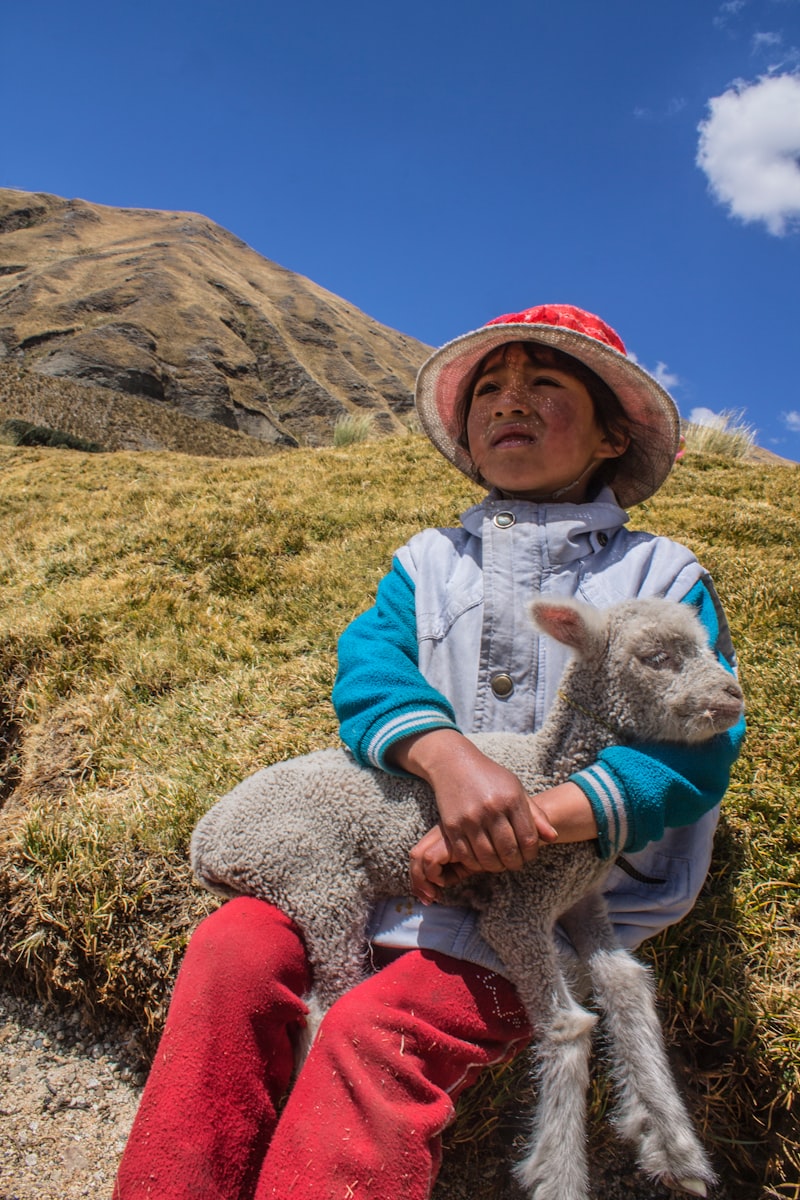Allergic Reactions and Treatment Options in Children

When it comes to our little ones, protecting them from harm is a top priority. However, managing allergic reactions in children can be a daunting task for parents and caregivers. Understanding the types of allergies and the available treatment options can provide valuable insight into keeping our kids safe. Let’s delve into this crucial topic and explore some effective ways to handle allergic reactions in children.
Firstly, it’s important to identify common allergens that can trigger an allergic reaction. These can range from food items like peanuts, milk, eggs, or shellfish to environmental factors such as pollen, pet dander, or dust mites. By knowing the specific triggers, we can take proactive measures to minimize exposure and reduce the risk of an allergic response.

When an allergic reaction occurs, it’s crucial to recognize the symptoms promptly. These may include hives, itching, swelling, nasal congestion, coughing, wheezing, or even anaphylaxis—a severe and potentially life-threatening reaction. Seeking immediate medical attention is essential in such cases to ensure proper diagnosis and appropriate treatment.
Treatment options for allergic reactions in children vary depending on the severity of the response. For mild to moderate allergies, antihistamines are often recommended. These medications help alleviate symptoms by blocking histamine, a chemical released during an allergic reaction. However, it’s important to consult a healthcare professional before administering any medication to your child.
In cases of severe allergic reactions, such as anaphylaxis, epinephrine injectors (commonly known as EpiPens) play a critical role. These devices deliver a dose of epinephrine, which helps reverse the symptoms and stabilize the child until emergency medical assistance arrives. It’s vital for parents and caregivers to be trained on how to use an EpiPen correctly and always carry it when necessary.

Additionally, allergen immunotherapy, commonly known as allergy shots, can be considered for children with specific allergies. This treatment involves regular injections of small amounts of the allergen to build tolerance over time. It can significantly reduce the severity of allergic reactions in children and improve their quality of life.
Dealing with allergic reactions in children requires vigilance, knowledge, and swift action. By being aware of common triggers, recognizing symptoms, and understanding the available treatment options, parents and caregivers can effectively support their little ones. Whether it’s through antihistamines, epinephrine injectors, or allergen immunotherapy, the aim is to ensure the safety and well-being of our children in the face of allergic reactions.
Breakthrough Study Reveals Surprising Factors Behind Rising Allergic Reactions in Children
Introduction:
Have you ever wondered why allergic reactions in children seem to be on the rise? A groundbreaking study has shed light on this puzzling phenomenon, revealing some unexpected factors that contribute to the increasing prevalence of allergies among our little ones. In this article, we will delve into the findings of this breakthrough study and explore the surprising elements behind the surge in allergic reactions in children.
Environmental Triggers:
The study highlights the significant role played by environmental factors in the development of allergies. Our modern lifestyles have exposed children to an array of substances that can trigger allergic responses. Pollutants present in the air, including dust, smoke, and chemicals, have been found to exacerbate allergic symptoms. Moreover, the excessive use of cleaning products and the presence of indoor allergens like mold and pet dander can also contribute to the rising rates of allergies in children.
Dietary Influences:
Another astonishing finding from the study is the impact of diet on allergic reactions. The research suggests that the early introduction of certain foods or delayed diversification may play a role in the development of allergies. For instance, a delay in introducing potential allergenic foods such as peanuts, eggs, or cow’s milk into a child’s diet could increase their susceptibility to allergic reactions later in life. On the other hand, early exposure to a diverse range of foods, including common allergens, might help build tolerance and reduce the risk of developing allergies.
Hygiene Hypothesis:
Contrary to popular belief, the study challenges the notion that excessive cleanliness offers protection against allergies. The “hygiene hypothesis” posits that reduced exposure to microorganisms in early childhood can disrupt the immune system’s natural development, leading to an increased likelihood of allergies. This hypothesis emphasizes the importance of microbial diversity and suggests that limited exposure to bacteria and parasites may hinder the immune system’s ability to distinguish between harmful and harmless substances.
Genetic and Epigenetic Factors:
While environmental and lifestyle aspects play a significant role, the study also underscores the influence of genetic and epigenetic factors in allergic reactions. Certain genes are associated with an increased predisposition to allergies, making some children more susceptible than others. Additionally, epigenetic modifications, which can be influenced by factors like diet, stress, and environmental exposures, may further impact gene expression and potentially increase the risk of developing allergies.

Conclusion:
The results of this breakthrough study provide valuable insights into the surprising factors driving the rise in allergic reactions among children. Understanding the interplay between environmental triggers, dietary influences, the hygiene hypothesis, and genetic/epigenetic factors is crucial for devising effective preventive and management strategies. By addressing these factors, we can strive to create a healthier environment that promotes optimal immune development and reduces the burden of allergies on our children.
Unmasking the Hidden Culprits: New Research Uncovers Unexpected Allergens Impacting Kids
Are you a parent worried about your child’s allergies? You’re not alone. Allergies affect millions of children worldwide, and understanding their causes is crucial for their health and well-being. Recent groundbreaking research has shed light on unexpected allergens that could be impacting your little ones. In this article, we will delve into the details of these hidden culprits and explore how they can trigger allergic reactions in kids.
One surprising revelation from the study is the role of household pets in triggering allergies. While furry companions are often considered part of the family, they may harbor unseen allergens. Researchers found that proteins present in pet dander can cause allergic reactions in susceptible children. This finding highlights the importance of regular cleaning and maintaining proper hygiene around pets to minimize exposure to potential allergens.
Additionally, the study uncovered a link between diet and allergies in children. Certain food items that are commonly consumed by kids were identified as hidden allergens. For example, peanut allergies have long been recognized, but other unsuspected culprits, such as soy, wheat, and eggs, were also found to trigger allergic responses. These findings emphasize the need for parents to be vigilant about their children’s diets and consider allergy testing if symptoms arise.
Moreover, indoor air quality was revealed as a significant factor in childhood allergies. The research indicated that pollutants present in indoor environments, such as dust mites, mold spores, and volatile organic compounds (VOCs), can contribute to allergic reactions. Ensuring proper ventilation, regularly cleaning carpets and upholstery, and using air purifiers are effective measures to reduce exposure to these hidden allergens.
New research has unmasked unexpected allergens that impact children’s health. From pet dander to dietary triggers and indoor pollutants, these hidden culprits can wreak havoc on your child’s immune system. By staying informed and taking proactive steps to minimize exposure, you can help protect your little ones from the discomfort and potential dangers of allergies. Remember, knowledge is power when it comes to safeguarding your child’s well-being. So, take action today and unmask the hidden culprits that may be affecting your kids’ health.
Revolutionary Treatment Breaks Ground in Managing Severe Allergic Reactions in Children
Introduction:
Are you concerned about your child’s severe allergic reactions? Well, worry no more! Exciting news has emerged from the medical field regarding a revolutionary treatment that is breaking new ground in managing severe allergic reactions in children. This groundbreaking approach offers hope to parents and caregivers, providing effective solutions for mitigating life-threatening allergies. Let’s delve into the details and explore the incredible advancements in the management of severe allergic reactions.
The Promise of Immunotherapy:
Imagine a world where children with severe allergies can enjoy life without constant fear of triggering a life-threatening reaction. Thanks to recent breakthroughs, this dream is becoming a reality. The latest treatment modality, known as immunotherapy, has shown remarkable potential in helping children build tolerance to allergens over time. By gradually exposing patients to small and controlled amounts of allergens, this innovative technique trains the immune system to develop a more favorable response.
How Immunotherapy Works:
Immunotherapy functions by reprogramming the body’s immune system, essentially teaching it not to overreact to specific allergens. Here’s how it works: under the careful guidance of healthcare professionals, children are exposed to increasing doses of the allergen they are allergic to. Initially, these doses are extremely small to prevent adverse reactions. As treatment progresses, the doses gradually increase, allowing the immune system to develop tolerance.
The Benefits:
This groundbreaking treatment brings a myriad of benefits to children suffering from severe allergic reactions. Firstly, it significantly reduces the frequency and severity of allergic episodes. Imagine watching your child play freely without the constant worry of an unexpected reaction. Secondly, immunotherapy decreases the need for emergency interventions such as epinephrine injections, providing families with peace of mind. Moreover, studies have indicated that this innovative treatment modality may have long-term effects, offering sustained relief even after the completion of therapy.
Conclusion:
Understanding Allergic Reactions in Children: Insights from Leading Pediatric Allergists
Introduction:
When it comes to our little ones, their health and well-being are always our top priority. As parents, understanding allergic reactions in children is crucial for providing the care they need. In this article, we delve into the insights shared by leading pediatric allergists to help you gain a better understanding of these reactions.
The Complexity of Allergies:
Allergic reactions occur when a child’s immune system overreacts to substances that are usually harmless. These substances, called allergens, can range from common culprits like pollen, dust mites, and pet dander to certain foods, medications, or insect stings. So why do some children experience allergies while others don’t? According to experts, genetics and environmental factors play pivotal roles in determining a child’s susceptibility to allergies.
Signs and Symptoms:
Recognizing the signs and symptoms of an allergic reaction is vital for early intervention. Pediatric allergists emphasize that symptoms can vary widely among children. Some common indicators include sneezing, coughing, itchy or watery eyes, runny nose, skin rashes, hives, swelling, and difficulty breathing. In severe cases, anaphylaxis, a life-threatening reaction, may occur, causing breathing difficulties and a sudden drop in blood pressure.


Diagnosis and Treatment:
Accurate diagnosis is essential in managing allergic reactions effectively. Pediatric allergists employ various methods, such as medical history assessments, physical examinations, and allergy testing, including skin prick tests and blood tests, to identify specific allergens triggering a child’s reactions. Once diagnosed, treatment options may include allergen avoidance, medication to alleviate symptoms, and, in some cases, immunotherapy to desensitize the child’s immune response over time.
Prevention and Management:
Preventing and managing allergic reactions involves a multi-faceted approach. Leading pediatric allergists recommend creating an allergen-free environment at home, implementing dietary modifications, and educating both children and caregivers about potential triggers. It’s also crucial to have an emergency action plan in place for severe allergic reactions, with easily accessible epinephrine auto-injectors if necessary.
Conclusion:
Understanding allergic reactions in children is a key step towards ensuring their well-being. By familiarizing ourselves with the signs, seeking prompt diagnosis, and implementing effective prevention and management strategies, we can provide the best care possible for our little ones. Stay informed, stay vigilant, and consult with a trusted pediatric allergist for personalized guidance tailored to your child’s unique needs.




